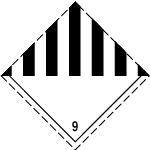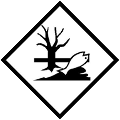SAFETY DATA SHEET
Cargille Immersion Oil, Type A
1. IDENTIFICATION
Product Identifiers
Product Name:
Cargille Immersion Oil, Type A
Other Names:
N/A
Product Number(s):
IC113, IC1132
CAS Number:
-
Recommended use of the chemical and restriction on use
Laboratory use.
Company Details
ProSciTech Pty Ltd
11 Carlton Street
KIRWAN QLD 4817
Australia(07) 4773 9444www.proscitech.com
11 Carlton Street
KIRWAN QLD 4817
Australia(07) 4773 9444www.proscitech.com
Emergency Contact Details
ProSciTech Pty Ltd
11 Carlton Street
KIRWAN QLD 4817
Australia(07) 4773 9444www.proscitech.com
11 Carlton Street
KIRWAN QLD 4817
Australia(07) 4773 9444www.proscitech.com
2. HAZARDS IDENTIFICATION
Classification of the substance or mixture
Skin Irrit. 2 H315 Causes skin irritation.
Label Elements

Signal Words
Warning
Hazard Statement(s)
H315 Causes skin irritation.
Precautionary Statement(s)
P264 Wash thoroughly after handling.
P280 Wear protective gloves and eye protection.
P302+P352 IF ON SKIN: Wash with plenty of water
P332+P313 If skin irritation occurs: Get medical advice/attention.
P362+P364 Take off contaminated clothing and wash it before reuse.
P280 Wear protective gloves and eye protection.
P302+P352 IF ON SKIN: Wash with plenty of water
P332+P313 If skin irritation occurs: Get medical advice/attention.
P362+P364 Take off contaminated clothing and wash it before reuse.
Primary route(s) of entry
Ingestion.
Inhalation.
Eye contact.
Skin contact.
Inhalation.
Eye contact.
Skin contact.
Human Health
Inhalation:
Not available.
Ingestion:
Not available.
Eyes:
Not available.
Skin:
Not available.
Environment
No further relevant information available.
3. COMPOSITION/INFORMATION ON INGREDIENTS
Name
CAS No.
Content (w/w)
Classification
Trade Secret
-
25-50%
Asp. Tox. 1, H304 Skin Irrit. 2, H315 Flam. Liq. 4, H227
4. FIRST AID MEASURES
Ingestion
After swallowing: Rinse out mouth and then drink plenty of water.
Do not induce vomiting; immediately call for medical help.
Do not induce vomiting; immediately call for medical help.
Inhalation
Supply fresh air; consult doctor in case of complaints.
Skin Contact
Immediately wash with water and soap and rinse thoroughly.
If skin irritation continues, consult a doctor.
If skin irritation continues, consult a doctor.
Eye Contact
Remove contact lenses if worn. Rinse opened eye for several minutes under running water. If symptoms persist, consult a doctor.
Other Information
Gastric or intestinal disorders when ingested. Danger: Causes skin irritation. If medical advice is needed, have product container or label at hand.
5. FIREFIGHTING MEASURES
Suitable extinguishing equipment
Foam
Fire-extinguishing powder
Gaseous extinguishing agents
Carbon dioxide Water fog / haze
Fire-extinguishing powder
Gaseous extinguishing agents
Carbon dioxide Water fog / haze
HAZCHEM
Not available.
Special protective equipment and precautions for fire fighters
Wear self-contained respiratory protective device.
Wear fully protective suit.
6. ACCIDENTAL RELEASE MEASURES
Personal precautions, protective equipment and emergency procedures
Wear protective equipment. Keep unprotected persons away.
Ensure adequate ventilation.
Ensure adequate ventilation.
Environmental precautions
Do not allow to enter sewers/ surface or ground water.
Inform respective authorities in case of seepage into water course or sewage system.
Inform respective authorities in case of seepage into water course or sewage system.
Methods and materials for containment and clean up
Absorb with liquid-binding material (sand, diatomite, acid binders, universal binders, sawdust). Send for recovery or disposal in suitable receptacle.
7. HANDLING AND STORAGE
Precautions for safe handling
Avoid splashes or spray in enclosed areas.
Conditions for safe storage
Store in a well-ventilated place. Keep cool.
Store away from foodstuffs.
Store away from oxidisers, strong acids, strong bases.
Storage Temperatures : 65 - 90 deg F / 18 - 32 deg C.
Keep containers tightly sealed.
8. EXPOSURE CONTROLS/PERSONAL PROTECTION
Exposure Standards
Material
TWA ppm
TWA mg/m3
STEL ppm
STEL mg/m3
Trade Secret
0.5 ppm
5 mg/m³
-
-
Engineering controls
No information available.
Personal protective equipment
Eye and face protection
Safety glasses
Follow relevant national guidelines concerning the use of protective eyewear.
Avoid contact with the eyes and skin.
Follow relevant national guidelines concerning the use of protective eyewear.
Avoid contact with the eyes and skin.
Skin protection
Immediately remove all soiled and contaminated clothing. Wash hands before breaks and at the end of work. Protective work clothing.
Body protection
The usual precautionary measures for handling chemicals should be followed. Keep away from foodstuffs, beverages and feed.
Immediately remove all soiled and contaminated clothing.
Wash hands before breaks and at the end of work.
Do not inhale gases / fumes / aerosols.
Avoid contact with the eyes and skin.
Immediately remove all soiled and contaminated clothing.
Wash hands before breaks and at the end of work.
Do not inhale gases / fumes / aerosols.
Avoid contact with the eyes and skin.
Respiratory protection
Do not inhale gases / fumes / aerosols.
9. PHYSICAL AND CHEMICAL PROPERTIES
General information
Appearance
Colourless to light yellow, oily liquid
Odour
Slight
pH
Not available.
Vapour Pressure
<0.133 hPa (0.1 mmHg)
Density
0.923 g/cm³ (7.702 lbs/gal)
Boiling Point
340 °C (644 °F) (1 atm / 1.0132 bar)
Melting Point
0 °C (32 °F)
Solubility
Not miscible or difficult to mix.
Specific Gravity of Density
Not determined
Flash Point
163 °C (325 °F) (Open Cup)
Flammable (Explosive) Limits
Not determined
Ignition Temperature
Not determined
Formula
Not available.
10. STABILITY AND REACTIVITY
Reactivity
No further relevant information available.
Chemical stability
Stable under normal temperatures and pressures.
Possibility of hazardous reactions
Can form explosive mixtures in air if heated above flash point and/or when sprayed or atomized.
Reacts with strong oxidising agents.
Reacts with strong acids and alkali.
Reacts with strong oxidising agents.
Reacts with strong acids and alkali.
Conditions to avoid
Excessive heat. Store away from oxidising agents.
Incompatible materials
Store away from oxidising agents.
11. TOXICOLOGICAL INFORMATION
Acute effects
No further relevant information available.
Eye contact
Based on available data, the classification criteria are not met.
Skin contact
Irritant to skin and mucous membranes.
Ingestion
No further relevant information available.
Inhalation
Irritant to skin and mucous membranes.
Toxicity and irritation
No further relevant information available.
12. ECOLOGICAL INFORMATION
Ecotoxicity
General notes: Do not allow undiluted product or large quantities of it to reach ground water, water course or sewage system.
Persistence and degradability
Due to available data on eliminability/decomposition and bioaccumulation potential prolonged term damage of the environment can not be excluded.
Bioaccumulative potential
Due to the distribution coefficient n-octanol/water an accumulation in organisms is not expected.
Other adverse effects
Harmful to fish
Toxic for water fleas
Do not allow undiluted product or large quantities of it to reach ground water, water course or sewage system.
Due to available data on eliminability/decomposition and bioaccumulation potential prolonged term damage of the environment can not be excluded.
Toxic for water fleas
Do not allow undiluted product or large quantities of it to reach ground water, water course or sewage system.
Due to available data on eliminability/decomposition and bioaccumulation potential prolonged term damage of the environment can not be excluded.
13. DISPOSAL CONSIDERATIONS
General information
Must not be disposed of together with household garbage. Do not allow product to reach sewage system. The user of this material has the responsibility to dispose of unused material, residues and containers in compliance with all relevant local, state and federal laws and regulations regarding treatment, storage and disposal for hazardous and nonhazardous waste
14. TRANSPORT INFORMATION
ADG label required


HAZCHEM
Not available.
UN Number
UN3082
Proper shipping name
ENVIRONMENTALLY HAZARDOUS SUBSTANCE, LIQUID, N.O.S (TERPHENYL)
Transport hazard class
9 Miscellaneous dangerous substances and articles
Packing group
PG III
Environmental hazard
This is a marine pollutant.
Harmful to fish.
Toxic for water fleas.
Harmful to fish.
Toxic for water fleas.
Special precautions for users
· Special precautions for user Warning: Miscellaneous dangerous substances and
articles
· Danger code (Kemler): 90
· EMS Number: F-A,S-F
articles
· Danger code (Kemler): 90
· EMS Number: F-A,S-F
Additional information
Not regulated when carried in single or combination packaging containing a net quantity of 5L or less for liquids or 5 kg or less for solids per the following:
DOT: 171.4©(2)
ADR: SP 375
IMDG: 2.10.2.7
IATA: special provision A197
DOT: 171.4©(2)
ADR: SP 375
IMDG: 2.10.2.7
IATA: special provision A197
15. REGULATORY INFORMATION
Poisons Schedule Number
None of the ingredients are listed.
Other Information
No further relevant information available.
16. OTHER INFORMATION
SDS preparation date
2 September 2024
Comments
This information is based on our present knowledge. However, this shall not constitute a guarantee for any specific product features and shall not establish a legally valid contractual relationship.
This Safety Data Sheet (SDS) has been prepared in compliance with the Preparation of Safety Data Sheets for Hazardous Chemicals Code of Practice February 2016. It is the user's responsibility to determine the suitability of this information for adoption of necessary safety precautions. The information published in this SDS has been compiled from the publications listed in Section 16: to the best of our ability and knowledge these publications are considered accurate. We reserve the right to revise Safety Data Sheets as new information becomes available. Copies may be made for non-profit use.